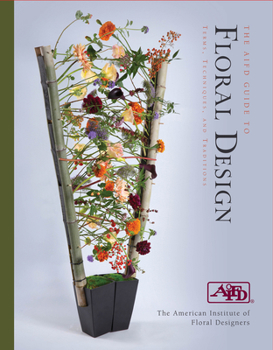So, I’m glad that I googled whether I could plant my Easter Lily. Most of them have LSV (Lily Symptomless Virus). Nope.

plantwiseplusknowledgebank.org
Lily symptomless virus
LSV occurs in its primary host Lilium as a single infection, or in mixed infections with one or more other viruses, such as Arabis mosaic nepovirus (Asjes and Segers, 1983), broad bean wilt fabavirus (Lee et al., 1996), citrus tatter leaf capillovirus (Inouye et al., 1979), cucumber mosaic cucumovirus (Allen and Lyons, 1969), lily mild mosaic virus (Lee et al., 1996), lily mottle potyvirus (Dekker et al., 1993, Derks et al., 1994), lily X potexvirus (Stone, 1980), strawberry latent ringspot nepovirus (Asjes and Segers, 1983), tobacco rattle tobravirus (Derks, 1975), tomato ringspot nepovirus (Lee et al., 1996) and tulip breaking potyvirus/lily mottle potyvirus (Asjes et al., 1973; Dekker et al., 1993; Derks et al., 1994).
The symptoms in LSV-infected lilies differ in severity according to the sensitivity of cultivars and growing conditions in the field or greenhouse.Field-grown plants mostly appear healthy from emergence of leaves to late after flowering.
Occasionally leaves show mild vein-clearing, but at the end of the season necrotic spots or mosaic may appear in some highly sensitive cultivars. As a rule, senescence occurs earlier in LSV-infected lilies than in virus-free plants.LSV symptoms may be more evident in flowers produced under glass for cut flowers than in field-grown plants. Symptoms may be more apparent in winter than in summer. The quality of LSV-tested lily cut flowers was found to be improved. The flowers were better-coloured and larger than those of symptomless virus-infected plants. The plants had a greater height and weight. The vase life was extended, particularly of the lower stem leaves, which in LSV-infected plants generally turn yellow fairly quickly (Boontjes, 1978; Blake and Wilson, 1996; Schouten et al., 1997).Alstroemeria spp. LSV induces symptomless infection in most cultivars.Tulips. LSV induces mild flower breaking in intolerant cultivars.
LSV can be eliminated by a combination of measures, including tissue culture and measures to prevent virus spread under greenhouse and field conditions. In some regions of the world adequate methods to achieve this aim have been developed. In the Netherlands, as a consequence of these activities, the description of newly bred varieties led to the registration of plant characters of the virus-tested cultivars from the late 1970s onwards.Viruses were eliminated from infected lily tissues by the use of in vitro culture of isolated meristems adventitiously formed on bulb scale explants (Allen, 1974). This procedure was successful with Asiatic hybrids but not with L. longiflorum (Linderman et al., 1976; Allen et al., 1980). The in vitro procedure was further developed for a series of cultivars together with improved serological testing by ELISA (Beijersbergen and van der Hulst, 1980) and the rapid propagation of plantlets by tissue culture methods (van Aartrijk and van der Linde, 1986) enhanced the aim to build up bulky foundation stocks in the Netherlands (Asjes, 1976, 1990).The chemical Virazole (ribavirin) incorporated in the culture medium at 40.0 nM reduced the percentage of infected plantlets of L. longiflorum 'Arai' from 61.4 to 35.4, but it had no effect on the Asiatic hybrid Enchantment (Blom-Barnhoorn and van Aartrijk, 1985). Kim et al. (1994) reported that the most effective ribavirin concentration for virus elimination from in vitro cultured bulblets of Georgia and Connecticut King lilies were 20 and 100 mg/litre, respectively.
Virazole was a potent inhibitor of LSV replication at permissive temperatures. Initiation at 25°C followed by growth at 30°C should result in a very low LSV concentration in the new bulblets (Cohen et al., 1996). Growth regulators (BAP, NAA and 2,4-D) affected the bulblet formation and the elimination of LSV. The optimal number of adventitious buds from bulb scale explants was obtained on Linsmaier-Skoog basal medium with 1.5-2.0 mg/litre BAP + 0.5 mg/litre NAA. DAS-ELISA revealed that the highest percentage of virus-free regenerants were obtained on media containing BAP and NAA. While 2,4-D reduced virus concentration all bulblets formed on the media without growth regulators were virus-infected (Chavdarov and Denkova, 1995).Work with more than 80 Latvian bred lily cultivars proved that they can be successfully propagated in vitro from flower buds. Flower development in propagated plants was normal and began on a large scale in the fourth year (Zhola et al., 1992).A series of steps are needed to ensure the production of high quality material, to free lilies from LSV and other viruses and maintain the lowest level of virus infection while bulking up and propagating virus-tested lots of many cultivars. These steps comprise: 1. preparation of nuclear stocks originating from tissue culture; 2. increase of virus-tested stocks by rapid tissue propagation
Lily symptomless virus
LSV occurs in its primary host Lilium as a single infection, or in mixed infections with one or more other viruses, such as Arabis mosaic nepovirus (Asjes and Segers, 1983), broad bean wilt fabavirus (Lee et al., 1996), citrus tatter leaf capillovirus (Inouye et al., 1979), cucumber mosaic cucumovirus (Allen and Lyons, 1969), lily mild mosaic virus (Lee et al., 1996), lily mottle potyvirus (Dekker et al., 1993, Derks et al., 1994), lily X potexvirus (Stone, 1980), strawberry latent ringspot nepovirus (Asjes and Segers, 1983), tobacco rattle tobravirus (Derks, 1975), tomato ringspot nepovirus (Lee et al., 1996) and tulip breaking potyvirus/lily mottle potyvirus (Asjes et al., 1973; Dekker et al., 1993; Derks et al., 1994).The symptoms in LSV-infected lilies differ in severity according to the sensitivity of cultivars and growing conditions in the field or greenhouse.Field-grown plants mostly appear healthy from emergence of leaves to late after flowering.
Occasionally leaves show mild vein-clearing, but at the end of the season necrotic spots or mosaic may appear in some highly sensitive cultivars. As a rule, senescence occurs earlier in LSV-infected lilies than in virus-free plants.LSV symptoms may be more evident in flowers produced under glass for cut flowers than in field-grown plants. Symptoms may be more apparent in winter than in summer. The quality of LSV-tested lily cut flowers was found to be improved. The flowers were better-coloured and larger than those of symptomless virus-infected plants. The plants had a greater height and weight. The vase life was extended, particularly of the lower stem leaves, which in LSV-infected plants generally turn yellow fairly quickly (Boontjes, 1978; Blake and Wilson, 1996; Schouten et al., 1997).Alstroemeria spp. LSV induces symptomless infection in most cultivars.Tulips. LSV induces mild flower breaking in intolerant cultivars.
LSV can be eliminated by a combination of measures, including tissue culture and measures to prevent virus spread under greenhouse and field conditions. In some regions of the world adequate methods to achieve this aim have been developed. In the Netherlands, as a consequence of these activities, the description of newly bred varieties led to the registration of plant characters of the virus-tested cultivars from the late 1970s onwards.Viruses were eliminated from infected lily tissues by the use of in vitro culture of isolated meristems adventitiously formed on bulb scale explants (Allen, 1974).
This procedure was successful with Asiatic hybrids but not with L. longiflorum (Linderman et al., 1976; Allen et al., 1980). The in vitro procedure was further developed for a series of cultivars together with improved serological testing by ELISA (Beijersbergen and van der Hulst, 1980) and the rapid propagation of plantlets by tissue culture methods (van Aartrijk and van der Linde, 1986) enhanced the aim to build up bulky foundation stocks in the Netherlands (Asjes, 1976, 1990).The chemical Virazole (ribavirin) incorporated in the culture medium at 40.0 nM reduced the percentage of infected plantlets of L. longiflorum 'Arai' from 61.4 to 35.4, but it had no effect on the Asiatic hybrid Enchantment (Blom-Barnhoorn and van Aartrijk, 1985). Kim et al. (1994) reported that the most effective ribavirin concentration for virus elimination from in vitro cultured bulblets of Georgia and Connecticut King lilies were 20 and 100 mg/litre, respectively.
Virazole was a potent inhibitor of LSV replication at permissive temperatures. Initiation at 25°C followed by growth at 30°C should result in a very low LSV concentration in the new bulblets (Cohen et al., 1996). Growth regulators (BAP, NAA and 2,4-D) affected the bulblet formation and the elimination of LSV. The optimal number of adventitious buds from bulb scale explants was obtained on Linsmaier-Skoog basal medium with 1.5-2.0 mg/litre BAP + 0.5 mg/litre NAA. DAS-ELISA revealed that the highest percentage of virus-free regenerants were obtained on media containing BAP and NAA. While 2,4-D reduced virus concentration all bulblets formed on the media without growth regulators were virus-infected (Chavdarov and Denkova, 1995).Work with more than 80 Latvian bred lily cultivars proved that they can be successfully propagated in vitro from flower buds. Flower development in propagated plants was normal and began on a large scale in the fourth year (Zhola et al., 1992).
A series of steps are needed to ensure the production of high quality material, to free lilies from LSV and other viruses and maintain the lowest level of virus infection while bulking up and propagating virus-tested lots of many cultivars.
These steps comprise: 1. preparation of nuclear stocks originating from tissue culture; 2. increase of virus-tested stocks by rapid tissue propagation; 3. culture of foundation stocks under aphid-proof conditions in a greenhouse and/or gauze house; 4. culture of highly qualified stocks at a distance from severely virus-infected lots of lilies; and 5. routine spraying of fields with mineral oil and insecticide to prevent virus(es) spread (Asjes, 1990; Cohen et al., 1996).
In the Netherlands, mineral oil sprays have been used to maintain a high level of disease control (Asjes, 1984). Reduction in virus spread depended on the brand of oil, concentration of oil in the emulsion, the formulation of the oil brand, frequency of spraying, weather conditions and the cultivation methods. The application of synthetic pyrethroid insecticides was introduced in the early 1980s (Asjes, 1981). The present recommended measures to prevent the spread of LSV and other stylet-borne viruses in lilies in the Netherlands consists of weekly sprays of mineral oil plus pyrethroid insecticide in May, June and July, and fortnightly sprays in August and September (Asjes and Blom-Barnhoorn, 1994; Asjes et al., 1996). 3. culture of foundation stocks under aphid-proof conditions in a greenhouse and/or gauze house; 4. culture of highly qualified stocks at a distance from severely virus-infected lots of lilies; and 5. routine spraying of fields with mineral oil and insecticide to prevent virus(es) spread (Asjes, 1990; Cohen et al., 1996). In the Netherlands, mineral oil sprays have been used to maintain a high level of disease control (Asjes, 1984). Reduction in virus spread depended on the brand of oil, concentration of oil in the emulsion, the formulation of the oil brand, frequency of spraying, weather conditions and the cultivation methods. The application of synthetic pyrethroid insecticides was introduced in the early 1980s (Asjes, 1981).
The present recommended measures to prevent the spread of LSV and other stylet-borne viruses in lilies in the Netherlands consists of weekly sprays of mineral oil plus pyrethroid insecticide in May, June and July, and fortnightly sprays in August and September (Asjes and Blom-Barnhoorn, 1994; Asjes et al., 1996).



